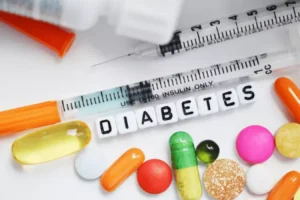- By admin
- In Sober Living
Products Data Briefs Number 448 November 2022

However, previous studies of trends have not assessed underlying causes of deaths that are partially attributable to alcohol use, such as injuries or certain types of cancer. Average annual number of deaths from excessive alcohol use increased 29.3%, from 137,927 during 2016–2017 to 178,307 during 2020–2021; age-standardized alcohol-related death rates increased from 38.1 to 47.6 per 100,000 population. During this time, deaths from excessive alcohol use among males increased 26.8%, from 94,362 per year to 119,606, and among females increased 34.7%, from 43,565 per year to 58,701. Increases in deaths from excessive alcohol use during the study period occurred among all age groups. A recent study found that one in eight total deaths among U.S. adults aged 20–64 years during 2015–2019 resulted from excessive alcohol use (9). Because of the increases in these deaths during 2020–2021, including among adults in the same age group, excessive alcohol use could account for an even higher proportion of total deaths during that 2-year period.

Mortality and life expectancy of people with alcohol use disorder in Denmark, Finland and Sweden

Alcohol abuse statistics indicate some inequalities may be due to social conditioning. U.S. deaths from causes fully due to excessive alcohol use increased during the past 2 decades. Multiple different reasons can spur someone to drink until they’ve become dependent on alcohol. We surveyed 2,136 American adults who either wanted to stop drinking alcohol or had already tried to (successfully or not).
- Michigan has a slightly higher rate of alcohol-related deaths and female drinking deaths.
- Evidence-based alcohol policies (e.g., reducing the number and concentration of places selling alcohol and increasing alcohol taxes) could help reverse increasing alcohol-attributable death rates.
- “One consequence is that the heaviest drinkers are of greatly disproportionate importance to the sales and profitability of the alcoholic-beverage industry,” he writes writes.
- Additionally, nearly 1 in 10 (9%) parents say they have caught their teenage children stealing alcohol from them.
- However, HHS has set a priority goal of reducing emergency department visits for acute alcohol use, mental health conditions, suicide attempts, and drug overdoses by 10% by 2025.
Kentucky Alcohol Abuse Statistics
Environmental influences, by contrast, did not overlap substantially across the two alcohol outcomes. Shared environment contributed to timing of first use but not to AD and the individual-specific environmental influences on timing of first alcohol use and AD were not significantly correlated. Thus, our results are consistent with the interpretation of early alcohol use initiation as a marker for familial liability to AD rather than a direct cause of the disorder9-11. However, given that a small (albeit non statistically significant) portion of covariance (16.5%) was attributable to individual-specific factors, how long do alcoholics live we cannot conclude, as Prescott and Kendler10 did, that the association is explained in full by familial sources. Overall, our findings highlight the prominent role of genetics in the development of AD and the early manifestation of that genetic risk in the timing of alcohol use initiation, which, unlike AD, is also influenced to a modest degree by shared environmental factors. In our sample, the DZ correlations for age at initiation of alcohol use and AD were greater than half the MZ correlations, indicating that a model incorporating C rather D (i.e., an ACE model) would be most appropriate for these data.

Share of adults who don’t drink alcohol

In the aggregate data, neither age- nor sex-specific alcohol consumption data were available. The results based on aggregated data were exploratory and may not be used to draw definitive causative conclusions. In addition, data about illegal alcohol production and individual cross-border import were not included in the national statistics (6) and could not be evaluated in this study.
- When we look at the variance in prevalence across age groups, we see that globally, the prevalence is highest in those aged between 15 and 49 years old.
- Members of the twin registry were contacted as adults in 1989 by means of mailed questionnaires.
- Department of Health and Human Services since 2017, no similar declaration exists regarding alcohol deaths.
- Life expectancy of people with alcohol use disorder (AUD) and people in the general population in Denmark, Finland and Sweden from 1987 to 2006.
Risky Driving
Exposures Trends in alcohol-induced mortality by sex, race/ethnicity, age, county-level socioeconomic status (ie, median income, percentage of unemployed residents, percentage of residents with a bachelor’s degree), rurality level, and US state. Registered total alcohol consumption in litres pure alcohol per capita in Denmark, Finland and Sweden from 1987 to 2006. The reliable nationwide health care registers in Denmark, Finland and Sweden provide a unique opportunity to study mortality in people diagnosed with AUD. To reduce alcohol-related fatal crashes among youth, all states have adopted a minimum legal drinking age of 21. NHTSA estimates that minimum-drinking-age laws have saved 31,959 lives from 1975 to 2017. Every day, about 37 people in the United States die in drunk-driving crashes — that’s one person every 39 minutes.

Measuring the health impact by mortality alone fails to capture the impact that alcohol use disorders have on an individual’s well-being. The ‘disease burden’ – measured in Disability-Adjusted Life Years (DALYs) – considers mortality and years lived with disability or health burden. The map shows DALYs per 100,000 people, which result from alcohol use disorders. In the chart, we see the prevalence of alcohol dependence versus the average per capita alcohol consumption. There is no clear evidence that high overall consumption (particularly in moderate quantities) is connected to the onset of alcohol dependency. In the chart, we see data across some countries on the share of people with an alcohol use disorder who received treatment.
- The sample consisted of 5,382 twins (2,691 complete pairs), aged 24 to 36 years, from the Australian Twin Registry.
- But, “there are a remarkable number of people who drink a couple of six packs a day, or a pint of whiskey.”
- Thus, narratives regarding increasing deaths among white US residents at midlife should be extended to note large increases in rates of alcohol-induced death among women and younger groups as well as among minority populations.
- They were subsequently administered diagnostic assessments via telephone between 1996 and 2000, when they were years of age.
Alcohol consumption by type of alcoholic beverage
Prevalence of Past-Year Alcohol Use Disorder (AUD)
- In Sweden, mortality rate ratios increased during the entire study period in men aged 30–74 years and women aged 45–74 years (Table (Table33).
- Overall, these groups drink less, but a higher percentage will drink heavily when they do.
- In 2022, there were 2,337 people killed in alcohol-related crashes where a driver had a BAC of .01 to .07 g/dL.

